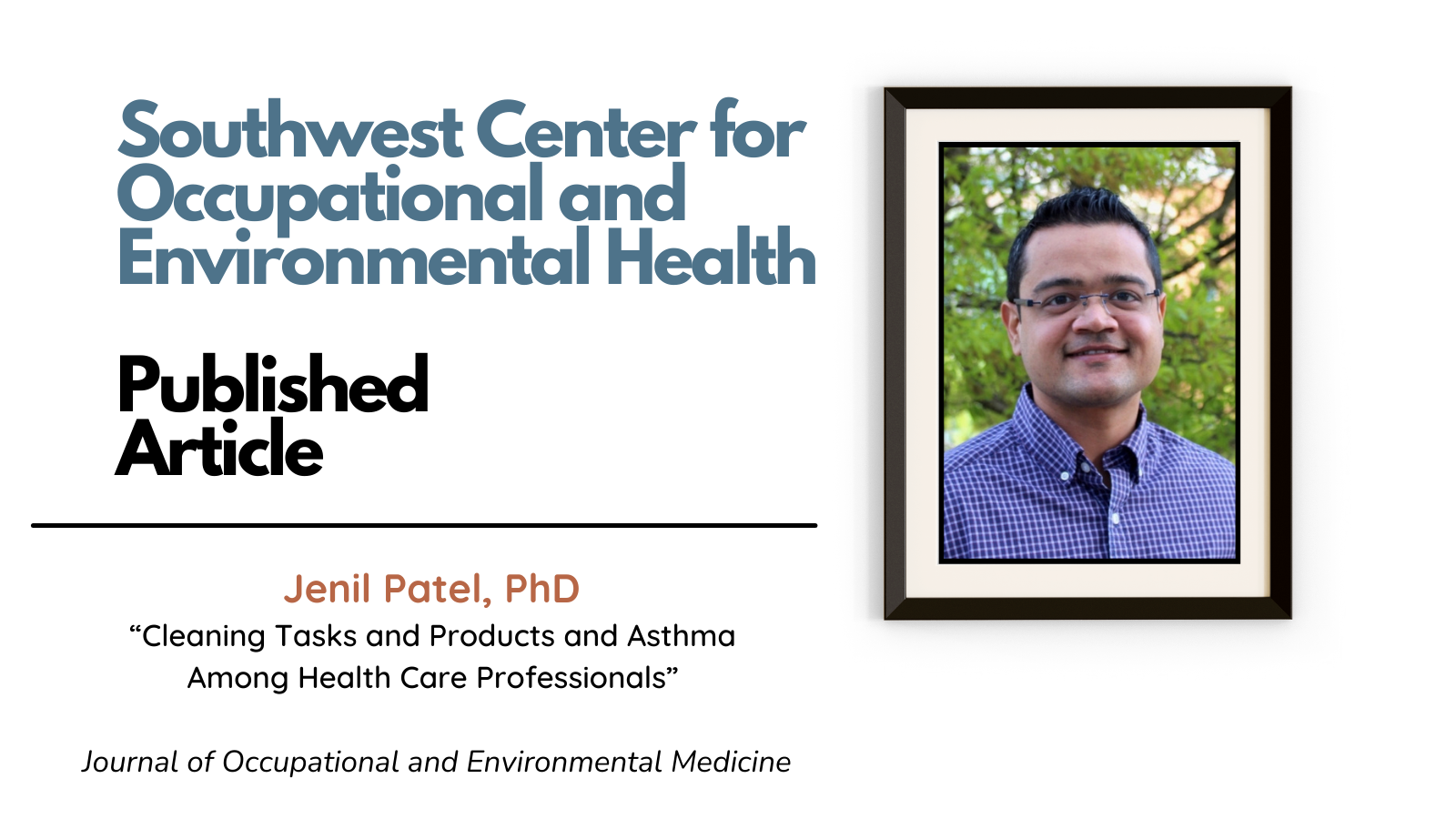
Patel publishes R01 study led by Drs. Delclos and Gimeno on asthma in Texas healthcare professionals
Jenil Patel, PhD, the pilot project research program director and occupational epidemiology doctoral training program director at the Southwest Center for Occupational and Environmental Health (SWCOEH) at UTHealth Houston School of Public Health, was the first author on a study published by the Journal of Occupational and Environmental Medicine (JOEM) in January.
“Cleaning Tasks and Products and Asthma Among Health Care Professionals,” examined associations of cleaning tasks and products with work-related asthma in health care workers (HCWs) in 2018, comparing them with prior results from a similar 2003 study conducted by the same lead authors. The published article caps a journey of academic research, epidemiology and medical training for Patel, an alumnus of the UTHealth Houston School of Public Health and SWCOEH ERC, and currently an assistant professor at UTHealth Houston School of Public Health.
“We conducted this follow-up of a previous study on asthma in Texas healthcare professionals, where the authors found increased prevalence of asthma among selected groups of healthcare professionals, notably nurses, along with increased associated asthma risk for surface and instrument cleaning,” Patel said. “In this new study, conducted 14 years later, we found that prevalence of asthma in healthcare professionals seems unchanged. However, associations of new-onset asthma with exposures to surface cleaning remained, and decreased for instrument cleaning.”
The study included a variety of investigators with ties to the SWCOEH and UTHealth Houston along with collaborations at external institutions (Baylor College of Medicine, CDC/NIOSH, and the University of Utrecht), including George L. Delclos, MD; David Gimeno Ruiz de Porras, PhD; Arch “Chip” Carson, MD; Lawrence W. Whitehead, PhD; Sadie Conway, PhD; Laura E. Mitchell, PhD; Inkyu Han, PhD; Lisa Pompeii, PhD; Jan-Paul Zock, PhD; Paul K. Henneberger, DSc; Riddhi Patel, MPH; and Joy De Los Reyes, MPH.
The team estimated asthma prevalence by professional group (nurses, physicians, respiratory therapists and occupational therapists) and explored associations of self-reported asthma with job-exposure matrix–based cleaning tasks/products in a representative Texas sample of 9,914 physicians, nurses, respiratory/occupational therapists, and nurse aides.
The study found that overall prevalence rates of new-onset asthma (NOA, 6.7%) and bronchial hyperresponsiveness (BHR) symptoms (31.1%) among HCWs remained high, or were slightly higher, in 2016 as compared with 2003 (6.6% and 27.4%, respectively). Some associations with cleaning tasks and products changed, whereas others remained the same.
Regarding cleaning tasks and products, the use of ortho-phthaladehyde (OPA), bleach, quaternary compounds, and sprays (all twice more likely) was associated with NOA. The association of NOA with patient care cleaners and with instrument cleaning and disinfection of medical instruments decreased substantially (40% to 60%), and exposure to powdered latex appeared even more controlled, but exposure to cleaning of building surfaces remained unchanged. Importantly, BHR symptoms, which, in 2003 were associated with cleaning of building surfaces and acute exposures to chemical spills, were no longer significantly associated with new onset asthma.
“In this more recent study, we also included certified nurse aides, an understudied healthcare profession, as part of the full study cohort,” Patel said. “Nurse aides are often involved in more cleaning and disinfection practices, compared to other healthcare professionals. The increased association with exposure to OPA and the continued association with cleaning building surfaces should be monitored, along with using alternative products and practices (eg, less use of bleach and aerosols). Overall, improving exposure controls and clinical asthma management could help decrease the asthma burden among HCWs.”
The SWCOEH provides graduate-level training opportunities for occupational and environmental health professionals through our industrial hygiene, occupational and environmental medicine, occupational epidemiology, and Total Worker Health® programs.

